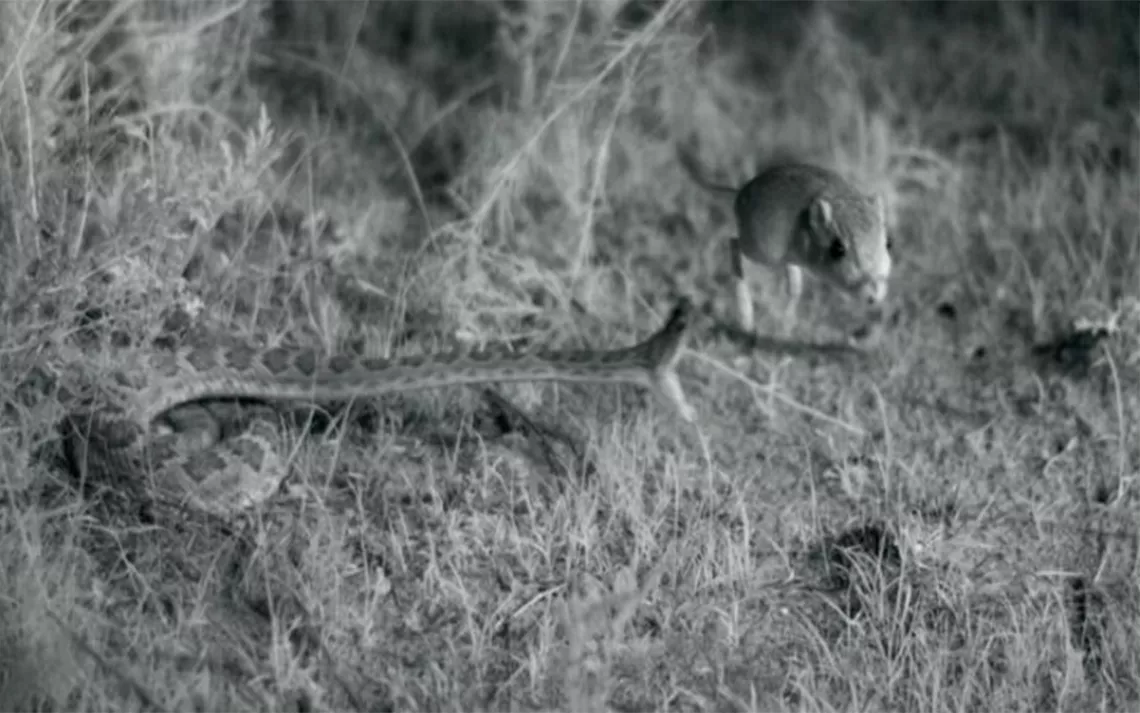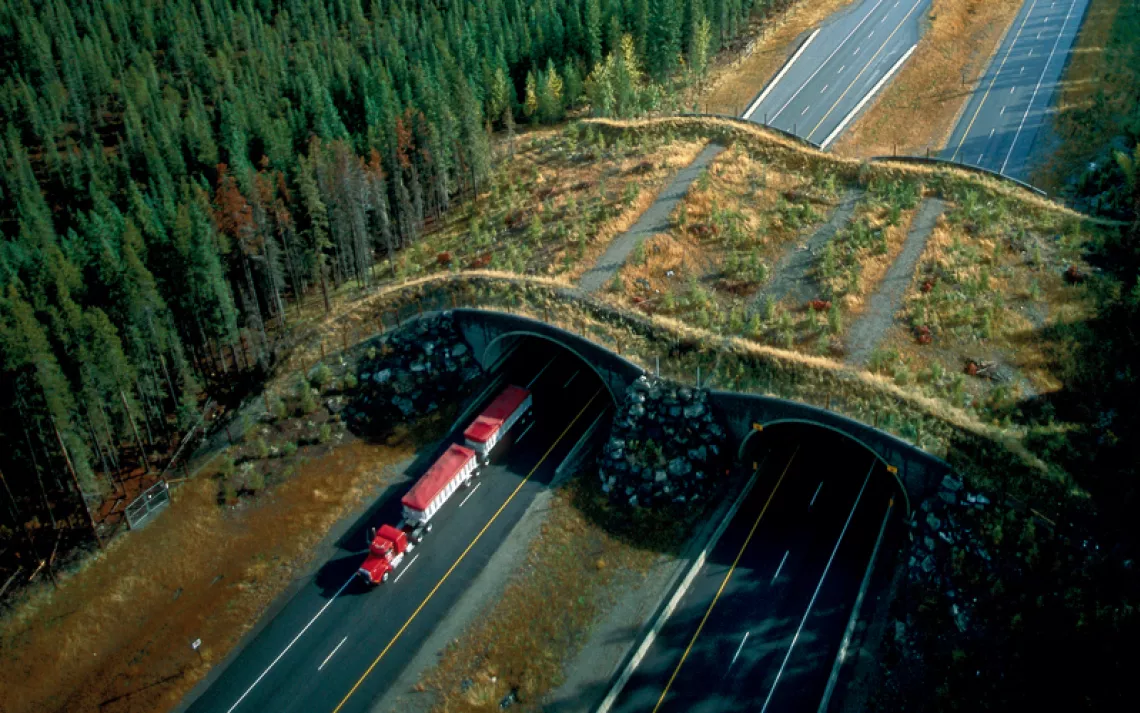The Science of the Snake Bite
High-speed cameras take the rattlesnake strike out of the lab and into the natural world

Photo courtesy of the University of California at Riverside
It’s not hard to find rattlesnakes in the New Mexico desert. Sit down to take a drink of water and you’ll likely hear one rustling behind a rock. That’s why Timothy Higham from the University of California at Riverside and Rulon Clark of San Diego State University went snake hunting there in the summer of 2015. The researchers traveled into desert with a crew of a dozen students, post docs, and volunteers lugging eight car batteries, chairs, computers, and other gear into the bush to capture images of Mojave rattlesnakes.
Why all the fuss just for some snake videos? While researchers have been able to use high-speed cameras to record and analyze rattlers and other snakes striking at prey in the lab, biologists had never been able to actually capture the feeding strikes of vipers in natural conditions. “We realized that research done on snakes in the lab could be artificial since we were having them strike artificial targets in an artificial environment,” says Higham. “With recent advances in technology, we could record the snakes in nature and find out what it reveals about predator-prey interactions in general.”
In years past, Higham says high-speed cameras weren’t usable in the field. Most of them were large and built for controlled environments like labs and crash-test facilities. But over the last decade, the cameras have shrunk. Higham says a new high-speed camera, sealed to keep the desert sand out and able to pick up infrared light, made the new research possible.
While the camera was the heart of the research, there were other factors that came together for the snake spotting. Clark, for instance, is an expert in tagging and tracking snakes. That allowed the crew to tag rattlesnakes during the day and relocate them at night when they had curled up into their strike position, waiting for prey to scurry by. That’s where all the batteries came in—the crew set up infrared lights to illuminate the snake and focused the camera on it. Then they sat back and waited, hoping to catch a lunge at a Merriam’s kangaroo rat, Dipodomys merriami, on video.
Some nights, Higham, Clark, and their crew would wait for 10 hours and not see a thing. Eventually, over the course of the field season, they captured eight rattlesnake strikes, four successful and four whiffs (they detail their findings in the journal Scientific Reports). By slowing down the 500-frames-per-second video to about 5 percent of normal speed, the researchers could analyze exactly how the snake struck at the rat and what evasive maneuvers the little mammals took to avoid being eaten. While Higham says they didn’t record as many strikes as he’d hoped, even the misses provided valuable data. “It turns out the reasons the snake succeeded or missed were really variable, and it’s something we’d never observe in the lab,” he says. “Sometimes it could be that the snake screwed up. Sometimes the kangaroo rat simply didn’t see the snake. It is under these conditions in which the predator and prey evolve. It’s therefore absolutely critical to observe animals in their natural habitat before making too many conclusions from laboratory studies alone.”
The research also suggested something else the lab research was missing: The snakes in their natural setting struck faster than animals recorded in the labs. While that is not a particularly surprising finding, David Penning—a biologist at Missouri Southern State University who recently conducted research overturning the scientific myth that vipers have the fastest strike among snakes—says the new research method could revolutionize herpetology. “In terms of what Higham has going on, he’s far ahead of the game for field research,” Penning says. “It’s an intense amount of work, but they have a beautiful model for studying vipers that sit in one spot and wait for their food.”
Penning says he hopes this is just the first of many similar studies. “There’s plenty of research to go around,” he says. “Of 3,500 snake species out there, we probably have strike performance on fewer than 1 percent. As technology advances, there’s definitely more to come. I mean you can get 256 frames per second on an iPhone now.”
Higham will be happy if the day comes when he can run his investigations just using an iPhone, but until then he plans on continuing to work with his entourage. In the summer of 2016, he conducted a similar study on the sidewinder rattlesnake, Crotalus cerastes, in Arizona using the same onerous setup and capturing 30 strikes. He hopes that his work just whets the public's and research community’s appetite for these types of images. “We need to understand predator/prey interactions in nature,” he says. “In the next 10 years, I hope there’s a movement to not only understand this in the lab but also in the wild. The sophistication of high-speed video technology is increasing so quickly, I think people will begin accidentally capturing predator/prey interactions with their GoPros. The amount of information we will get will be absolutely remarkable.”
 The Magazine of The Sierra Club
The Magazine of The Sierra Club






